In the realm of telling time, few instruments stand as a testament to the ingenuity of human innovation as the sundial. While modern society relies heavily on digital clocks and smartphones to keep track of time, the sundial offers a fascinating glimpse into the early methods of measuring time-based on the movement of the sun. Below we will consider the history, mechanics, and significance of the sundial, exploring its role in the evolution of how humans tell the time.
Table of Contents
The Origins of Sundials
Ancient Beginnings
Sundials trace their roots back to ancient civilizations such as the Egyptians, Greeks, and Romans. It is not known who first invented the sundial but many experts credit the ancient Egyptians with this feat. These civilizations recognized the patterns of the sun’s movement across the sky and ingeniously devised sundials to divide the daylight hours into more manageable segments. These early sundials were simple in design, often consisting of a vertical stick, or gnomon, that cast a shadow onto a marked surface.
Advancements in Design
As societies evolved, so did the design and sophistication of sundials. The Greeks, in particular, contributed significantly to the field of sundial design, introducing various shapes such as hemispherical and conical sundials. These designs allowed for greater accuracy in timekeeping, considering the Earth’s axial tilt and the sun’s varying positions.
How Sundials Work
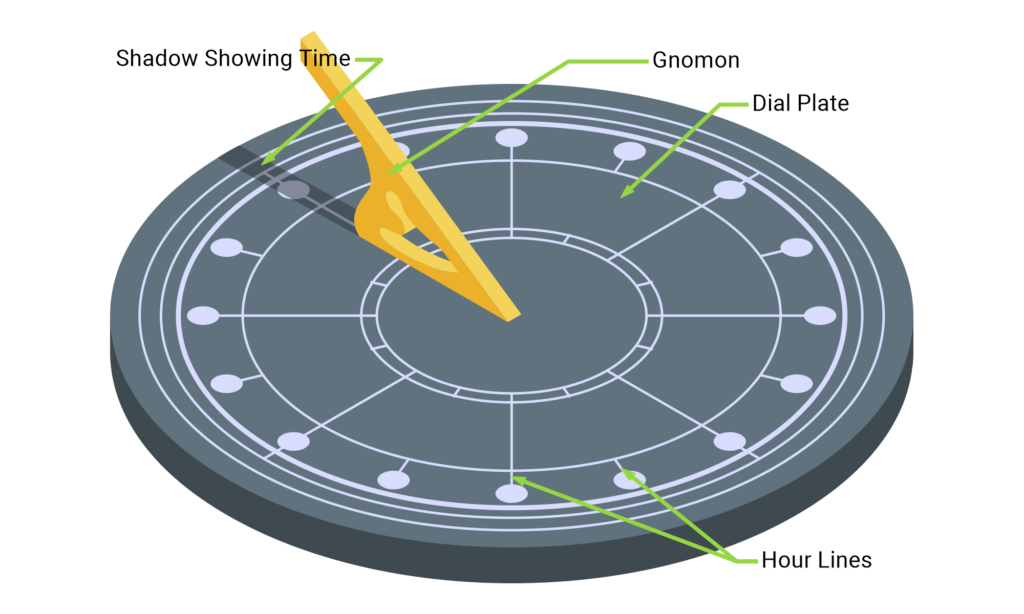
The Basics of Sundial Mechanics
Sundials operate on the principle that the sun’s position changes throughout the day, causing the shadow cast by the gnomon to move accordingly. The gnomon is oriented parallel to the Earth’s axis, pointing towards the North Star. As the sun moves across the sky from east to west, the shadow shifts in a predictable manner.
A sundial has a thin rod called a gnomon, which creates a shadow on a marked platform with different times. As the sun moves throughout the day, the shadow of the rod also moves, showing the changing time.
Accounting for the Equation of Time
While sundials are reliable timekeepers, they are not without their intricacies. The equation of time takes into account the elliptical orbit of the Earth around the sun, causing slight variations in the sun’s speed. This phenomenon leads to the equation of time, which adjusts the sundial’s reading to match standard time.
Types of Sundials
Sundials come in various shapes and forms, each with its own unique design and purpose. Some of the most common types include:
Horizontal Sundials
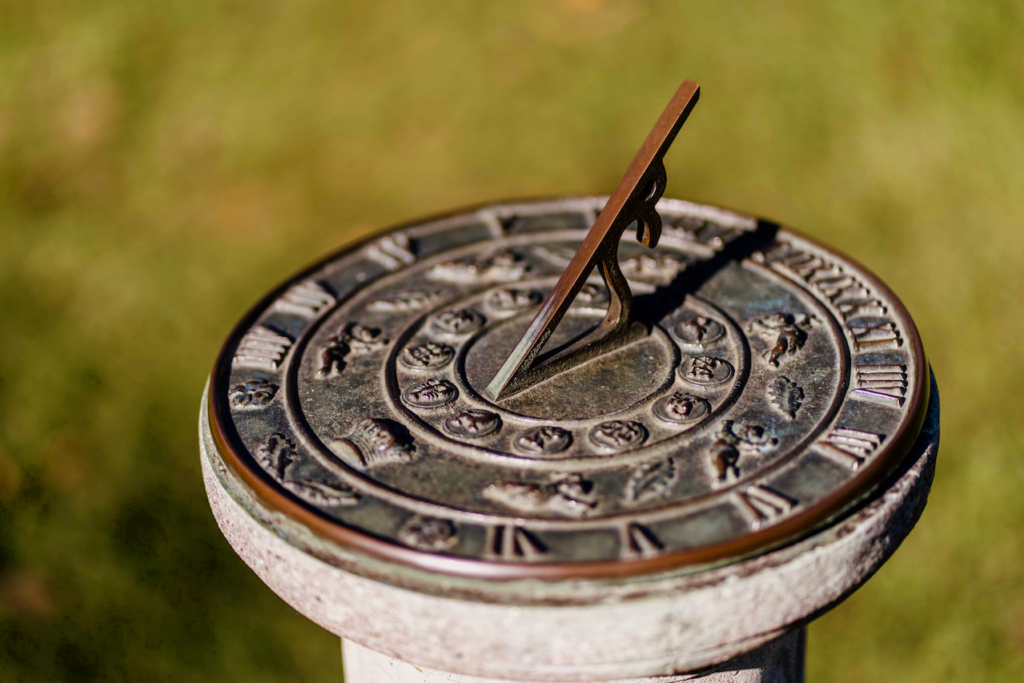
These are the simplest form of sundials, with a horizontal dial plate and a gnomon pointing towards the North Star. They work best at equatorial locations.
Vertical Sundials
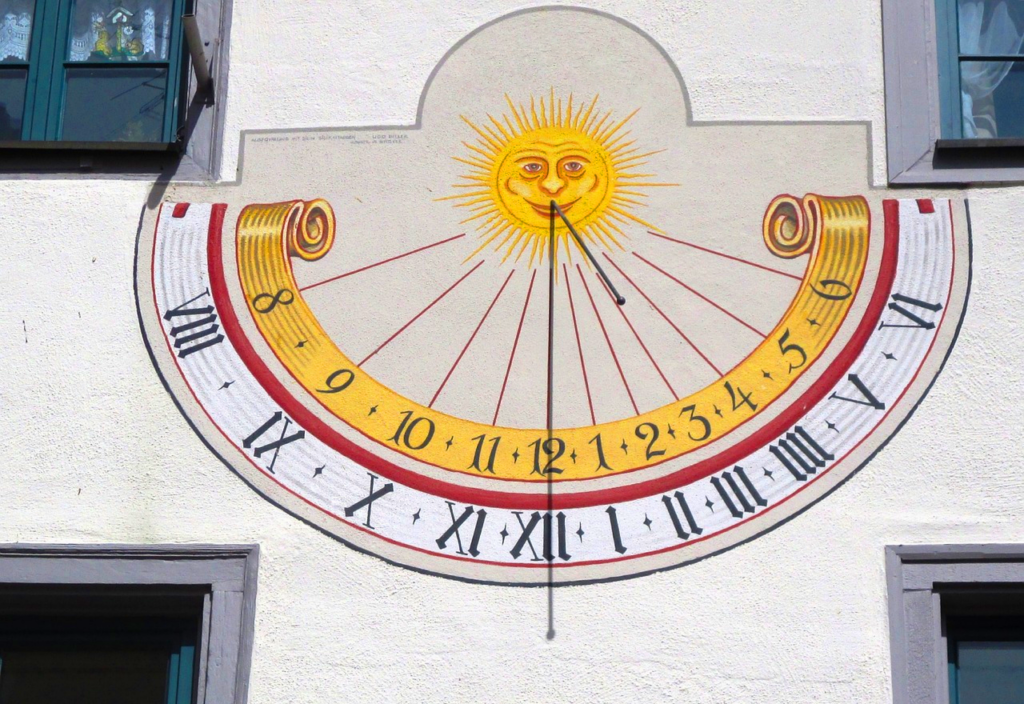
Vertical sundials are mounted on vertical surfaces like walls. Their gnomon points parallel to the Earth’s axis, making them suitable for locations away from the equator.
Equatorial Sundials
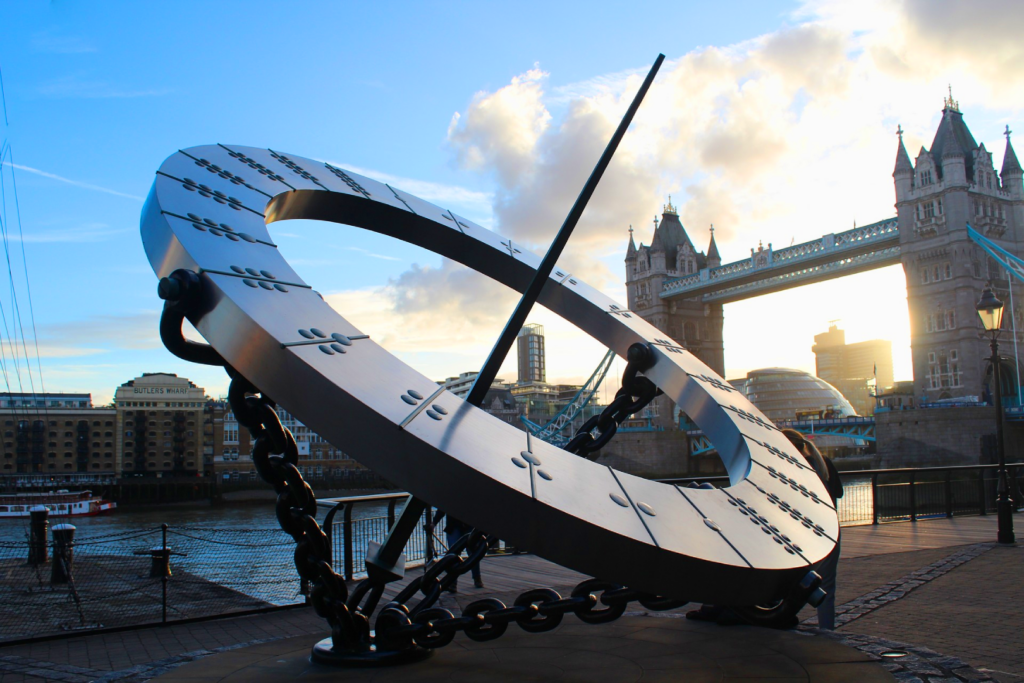
Equatorial sundials have a dial plate parallel to the Earth’s equator. Their gnomon points towards the celestial pole, casting a shadow aligned with hour lines.
Analemmatic Sundials
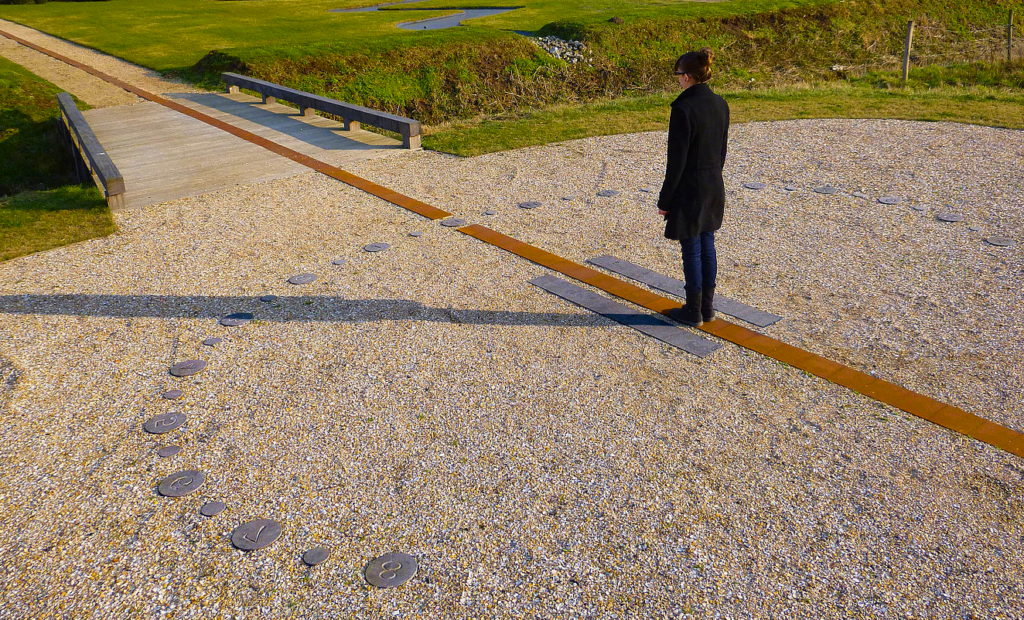
Analemmatic sundials involve a human as the gnomon. The person stands on a specific month-marked spot, and their shadow indicates the time.
Significance and Cultural Impact
Sundials do more than meets the eye. They are significant culturally as well.
Sundials as Architectural Marvels
Sundials not only served as practical timekeeping tools but also held cultural and artistic significance. Many ancient structures, such as the iconic sundial in the Roman city of Pompeii, were designed as both functional time indicators and stunning architectural features.
Symbolism and Allegory
Beyond their practical use, sundials often carried deeper symbolism. They were seen as metaphors for the passage of time, a reminder of the fleeting nature of life. In various literary works and artworks, sundials became powerful allegorical symbols, capturing the essence of mortality and the cyclical nature of existence.
Modern Resurgence and Educational Value
Sundials, though outdated in terms of technology, have continued to be popular with education and aesthetics.
Nostalgia and Aesthetic Appeal
In the present day, sundials are experiencing a resurgence in popularity. With a growing appreciation for vintage and retro aesthetics, many people are incorporating sundials into their gardens and outdoor spaces as unique decorative elements that also serve a functional purpose.
Teaching Astronomy and Geometry
Sundials continue to play a vital role in education. They serve as tangible tools for teaching concepts of astronomy and geometry, offering hands-on experiences that help learners grasp the fundamentals of celestial motion and the Earth’s relationship with the sun.
Creating Your Own Sundial
Crafting a sundial can be a rewarding DIY project. Whether you’re using a simple cardboard model or experimenting with more complex designs, building a sundial provides a hands-on experience of understanding celestial mechanics and the Earth’s relationship with the sun.
Some great examples of this:
The sundial stands as a bridge between ancient ingenuity and modern fascination. From its humble beginnings as a simple shadow-casting device, the sundial has evolved into a testament to human curiosity and scientific progress. Its legacy as both a timekeeping marvel and a symbol of the ephemeral nature of life reminds us of the interconnectedness of time, culture, and innovation.
Frequently Pondered Questions about Sundials
Are sundials still accurate in the digital age?
While sundials are not as precise as atomic clocks, they offer a unique way to appreciate the passage of time-based on the sun’s movement.
How do equatorial sundials differ from horizontal sundials?
Equatorial sundials are designed to be aligned with the Earth’s equatorial plane, while horizontal sundials lie flat and have a gnomon pointing towards the celestial pole.
Do all sundials have to be outdoors?
While outdoor placement is ideal for receiving direct sunlight, you can create indoor sundials near windows that receive sufficient sunlight.